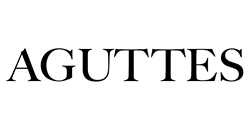Hi. I saw the thread above.
I don't this chassis number had anything to do with the 3 JW cars 1087, 1088 and 1089, as indicated in the sales text, they were appenetly so rustet that they also got a replacement chassis from Tennant panels se Below:
At the end of 1966, John Willment Automotive (JWA) took over the production and development of the Ford GT40 road and race cars from FAV. Through the next several years, JWA became almost synonymous with endurance sports car racing, running GT40s on the factory’s behalf with enormous success culminating with a back-to-back win in 1968 and 1969 Le Mans 24hr. When the GT40 program ended in 1969, 87 GT40s had been built which left three unassembled GT40 chassis, namely 1087, 1088 and 1089, the last three of the Ford-sanctioned run of 90 production vehicles.
These three chassis and all accompanying parts were kept by John Willment, the founder of JWA, with a plan to build these into complete cars at some later stage. As early as 1981, he secured the rights to these last three GT40s from JWA but it took until 1994 when John Willment decided to “finish the job” and he asked Brian Wingfield, GT40 expert and former a chassis development man at Ford, to build the 3 cars utilizing many of the essential parts he had stored since 1969 in a caravan on a farm occupied by his daughter Janet.
As the original chassis were beyond restoration due to rust, Wingfield’s team, led by Paul Fleming, used the original factory drawings to build authentic new tubs which was done by Tennant Panels. A few other corroded components, such as suspension wishbones, were also replaced for safety’s sake. Original 1969-spec Ford V8 engines, in 5 litre “302” form, were included in the stored kits and these were de-rusted and refurbished by John Dunn who, with his partner Ryan Falconer, had been responsible for much of the early GT40 engine development. The unit contains all the period’s authentic tweeks needed for 24-hour race reliability and the cylinder head is the famous Gurney-Weslake alloy design.
This car, with chassis P/1088, is the 2nd of these three cars and was built for John’s daughter Janet Willment. It was built to the exact same technical specification as the 1968 Le Mans cars and was finished in European Gulf colors. P/1088 remained in the ownership of Janet Willment (who changed her name to Avia Willment) until being sold privately in 2006.
I hope you find this usefull.

 www.aguttes.com
www.aguttes.com

